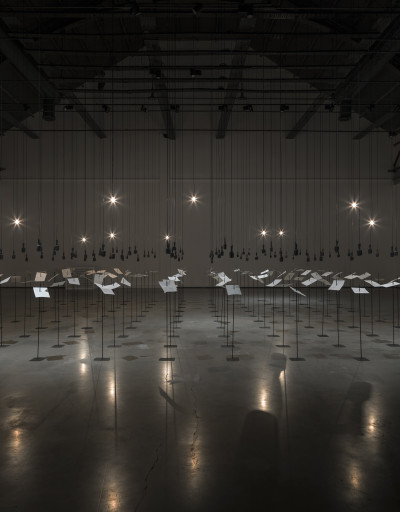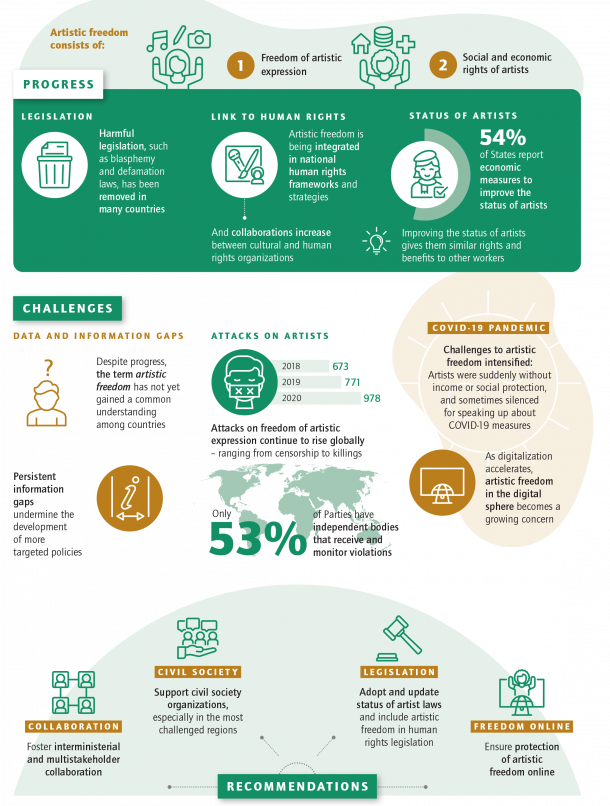
Safeguarding the freedom to create
Summary
The closing chapter of the Report considers the state of artistic freedom – a concept that speaks both of the right to freedom of artistic expression and the social and economic rights of artists and cultural professionals. Many States (54%) report introducing measures to improve the status of artists, while some have also removed legislation that can be used to curb artistic freedom, such as blasphemy and defamation laws. In addition, CSOs continue to play a vital role both in monitoring the state of freedom of artistic expression and in protecting artists at risk. Nonetheless, attacks on artistic freedom have increased since 2018 and there remains a worrying disconnect between protective law and practice. The working conditions of artists and cultural professionals have long been difficult, marked by a lack of fair remuneration and social security coverage, meaning that many are not able to live off their creative profession. This situation was only exacerbated during the COVID-19 pandemic and, although emergency measures were deployed by many countries (mainly to provide social protection and compensate for loss of income), it remains to be seen whether they can be sustained to overcome pre-existing challenges. Much also remains to be done to ensure artistic freedom, beginning with the need to improve understanding of the concept. Artistic freedom encompasses the freedom to create, as well as the economic and social rights frameworks and strategies that need to be in place for artists to do decent work and contribute fully to the development of societies.



